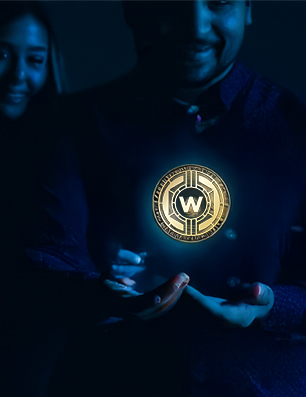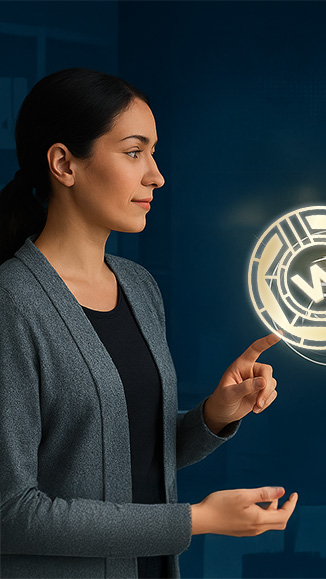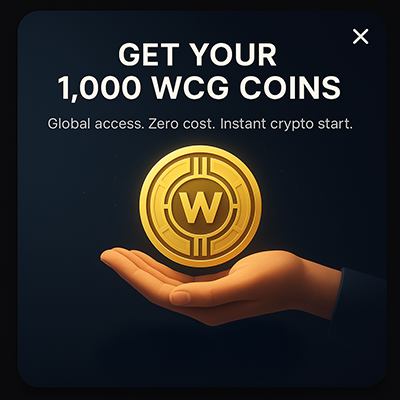- Written by: Finn Miller
- Sun, 19 Feb 2023
- United States
What are zk-rollups and how will they improve our experience of the Ethereum network? Continue reading at DailyCoin.
ZK-Rollups: Unravelling Ethereum’s Scalability Issues
Zk-rollups have long been touted as the ultimate solution to Ethereum’s woes. As blockchain and crypto adoption enjoy exponential growth worldwide, scaling solutions are needed to ensure the world’s leading smart contract platform can handle millions of users. Zero-knowledge proofs and rollup technology aim to boost transaction throughput in the Ethereum ecosystem, but there are still a lot of questions about how zk-rollups work. In this quick guide, we’ll be simplifying the complex jargon around zk-rollup solutions and making sure that you don’t have zero knowledge about zero-knowledge. Since the earliest days of Ethereum, every blockchain network has struggled to overcome a single concept: How to solve the Blockchain Trilemma. Coined by Vitalik Buterin, the Blockchain trilemma dictates that the perfect blockchain successfully balances decentralization, security and scalability. Even with dozens of Layer-1 blockchains competing daily, the blockchain trilemma remains unsolved. The irony of the trilemma is that balancing all three options is impossible because engineers always need to sacrifice one option to achieve the others. Take Solana, for example. Solana is often considered the fastest and most affordable blockchain available. The network boasts over 4,000 transactions per second (TPS), costing a single transaction less than a penny. Solana is also secure and just as safe as any other leading chain. On the other hand, Solana suffers from the final point of the trilemma, decentralization. The network is often criticized for constant outages due to centralized points of failure. Solana’s strength and resources came from venture capitalists, who hold a somewhat heavy allocation of SOL tokens. Despite being the leading Layer-1 blockchain and smart contract platform in the crypto industry, Ethereum has difficulties overcoming the blockchain trilemma. If you’ve ever used the Ethereum mainnet at peak traffic, you’ll know that scalability is not Ethereum’s strength. Throughout 2021 and 2022, Ethereum transaction costs were completely out of control. While basic send-and-receive transactions were around $20-30 each, more complex DeFi token swaps or NFT mints often cost over $100 each. Source: BitInfoCharts. Transaction fees and throughput are undoubtedly the biggest issues facing Ethereum scaling. During high congestion periods, dApps on the Ethereum network become almost unusable. In many cases, the transaction fee for buying an NFT costs more ETH than the NFT itself. These scalability issues make blockchain technology and decentralized finance (DeFi) inaccessible. Until these problems are solved, cryptocurrency and blockchain adoption will struggle to onboard the masses. Thankfully, there are plenty of different ways for Ethereum to become the global powerhouse we know it has the potential to be. Some of the most revolutionary Ethereum scaling solutions are zero-knowledge and optimistic rollups. Rollups help reduce network congestion on the Ethereum main chain. They take computation and state-storage off-chain process transaction data on other blockchains and then send it back to the main chain. Essentially, rollups allow the network to ‘roll up’ a batch of transactions into one cost-effect transaction. This means users can enjoy the security of the Ethereum layer while benefitting from the cheaper gas fees and faster throughput of Layer-2 networks, like Polygon or Arbitrum. Rollups aren’t the only Ethereum scaling solutions out there. Alternative methods include sharding, sidechains, and state channels. While these are all viable solutions, Buterin himself is most bullish on rolllups and believes that they’ll be an integral part of Ethereum’s future. Rollups are typically divided into two groups, optimistic rollups, and zk-rollups. The main difference between the two is how they verify transactions. Optimistic rollups rely on fraud proofs to validate transaction data, while zk-rollups use zero-knowledge proofs (ZKPs). As the name suggests, optimistic rollups are, well, optimistic. Adopting an ‘innocent-until-proven-guilty’ approach, optimistic rollups assume that each transaction in a rollup is valid. The network all users a set period, usually around a week, to resolve disputes around fraudulent transactions. By optimistically assuming that every transaction is valid, the network doesn’t have to devote excess time and computation to confirming transactions are accurate. Some of the most popular Layer-2 solutions, like Arbitrum and Optimism, use this technology to settle off-chain transactions before sending them back to the Ethereum main chain. Zk-rollups use complex cryptography called a zkproof to ensure that all rollup transactions are valid without sharing sensitive information about the transactions themselves. They rely on cryptographic proof and submit validity proofs to smart contracts on Ethereum instead of assuming that all transactions are valid. This means that all zk-rollup transactions can be processed off-chain, while also reducing the amount of transaction data shared, making them focused on privacy. Moreover, because they don’t need to wait a week for fraudulent transactions to be contested, zk-rollups are considered a much faster and superior technology to Optimistic rollups. The most common zk-proofs we see in cryptography are zk-snarks and zk-starks. Simply put, these systems allow users to prove that they know vital or sensitive information, such as transaction data, without publicly revealing the data. Examples of a few zk-rollup projects include Starknet and Immutable X. Zk-rollups have made significant progress in addressing Ethereum’s scalability issues. They’ve introduced faster and more affordable transactions secured on the main chain and made DeFi more accessible than ever. That being said, they’re far from a perfect solution. If you’ve ever hopped between the most popular blockchain networks like Ethereum, Binance Smart Chain or Avalanche, you’ve probably noticed that many dApps and wallets have a similar interface and user experience. This is thanks to a convenient technology called the Ethereum Virtual Machine, or EVM. In its purest form, the Ethereum Virtual Machine is a database and machine state for interacting with Ethereum accounts and contracts. Developers use the EVM to build and deploy dApps on the Ethereum network, as well as by users who interact with these applications using their crypto wallets. What’s special about EVMs is that they’re not Ethereum-exclusive. Many other blockchains run their own EVM, which makes it possible for Ethereum-based dApps and tools to be easily ported over and deployed on other networks. For example, many decentralized exchanges like PancakeSwap on the Binance Smart Chain or Quickswap on Polygon were created using Ethereum smart contracts. See the similarities between UniSwap and PancakeSwap’s UI? Each respective network’s EVM makes it possible to write Ethereum-based code and applications and replicate them on other networks. This makes blockchain development between EVM-compatible chains far more interoperable and gives developers and users greater flexibility. As the name would suggest, a zkEVM uses zero-knowledge technology and proofing within an Ethereum Virtual Machine. Most importantly, they support smart contract development on zk-rollups, giving these powerful scaling solutions greater utility. Without a zkEVM, zk-rollups would be limited to simple transactions like basic send and receive functions. Essentially, a fully functional zkEVM will bring the complete Ethereum experience, including DeFi and NFTs, to the scalable and secure environment of a zk-rollup network. An effective zkEVM can securely process thousands of transactions per second. This is a significant improvement from the Ethereum main chain, which struggles to clear more than 20 TPS. Competition within the zkEVM field is tense, with some of the biggest names in the crypto space, like Polygon, hustling to be among the first to deploy a functional zkEVM. The Polygon team has had their eyes set on a zkEVM for some time after purchasing the Hermez Network for $250M back in 2021. Polygon has since launched a zk-rollup solution named Polygon Hermez in mid-2022. While this represented a key milestone in the zk-rollup sector, Polygon Hermez is limited to simple token transactions, such as sending and receiving payments. The Polygon zkEVM is expected to launch in 2023 and will bring greater utility and smart contract support to their zk-rollup scaling solution. Other projects like Matter Lab’s zkSync are leading contenders to release the world’s first zkEVM, alongside notable competitors like Starknet and Scroll. While zk-rollups are arguably more scalable and secure, Optimistic rollups like Arbitrum attract more users and process more transactions than other Layer-2 scaling solutions. However, this could change with the launch of the first zkEVM, which will bring greater utility to zk-rollups. The Ethereum network is ill-prepared to accommodate growing adoption and an influx of new users. Zk-rollup scaling solutions and zkEVMs will make blockchain technology and cryptocurrency far more accessible than before and drive mass adoption worldwide. The world of zk-rollups is competitive, with plenty of top teams working on zero-knowledge scaling solutions, including Polygon, Starknet, and zkSync. Zk-Rollups are arguably better than optimistic rollups because they use zk-proofs to validate transactions, making the network faster and more secure. Polygon (MATIC) is the most well-known Layer-2 (L2) crypto and Ethereum scaling solution. That said, rival L2s like Arbitrum and Optimism are gaining traction to compete with Polygon for the top spot. While being a powerful Layer-2 scaling solution, the Arbitrum network is not a zk-rollup. Arbitrum uses the Optimistic rollup framework, which assumes that all transactions are valid, instead of verifying transactions using a zk-proof system. The Polygon network is home to various products and services, including zk-rollups like Polygon Zero and Polygon Hermez.What’s Wrong with the Ethereum Blockchain?
Ethereum Scalability
What are Rollups?
Optimistic Rollups
ZK-Rollups
Pros and Cons of Zero-Knowledge Rollups
Advantages of Zk-rollups
Disadvantages of Zk-rollups
The Ethereum Virtual Machine (EVM)
zkEVM
The zkEVM Race
On the Flipside
Why You Should Care
FAQs
What are the top zk-rollups?
Why are zk-rollups better than optimistic rollups?
What is the biggest L2 crypto?
Is Arbitrum a zk-rollup?
Does Matic use zk-rollups?






